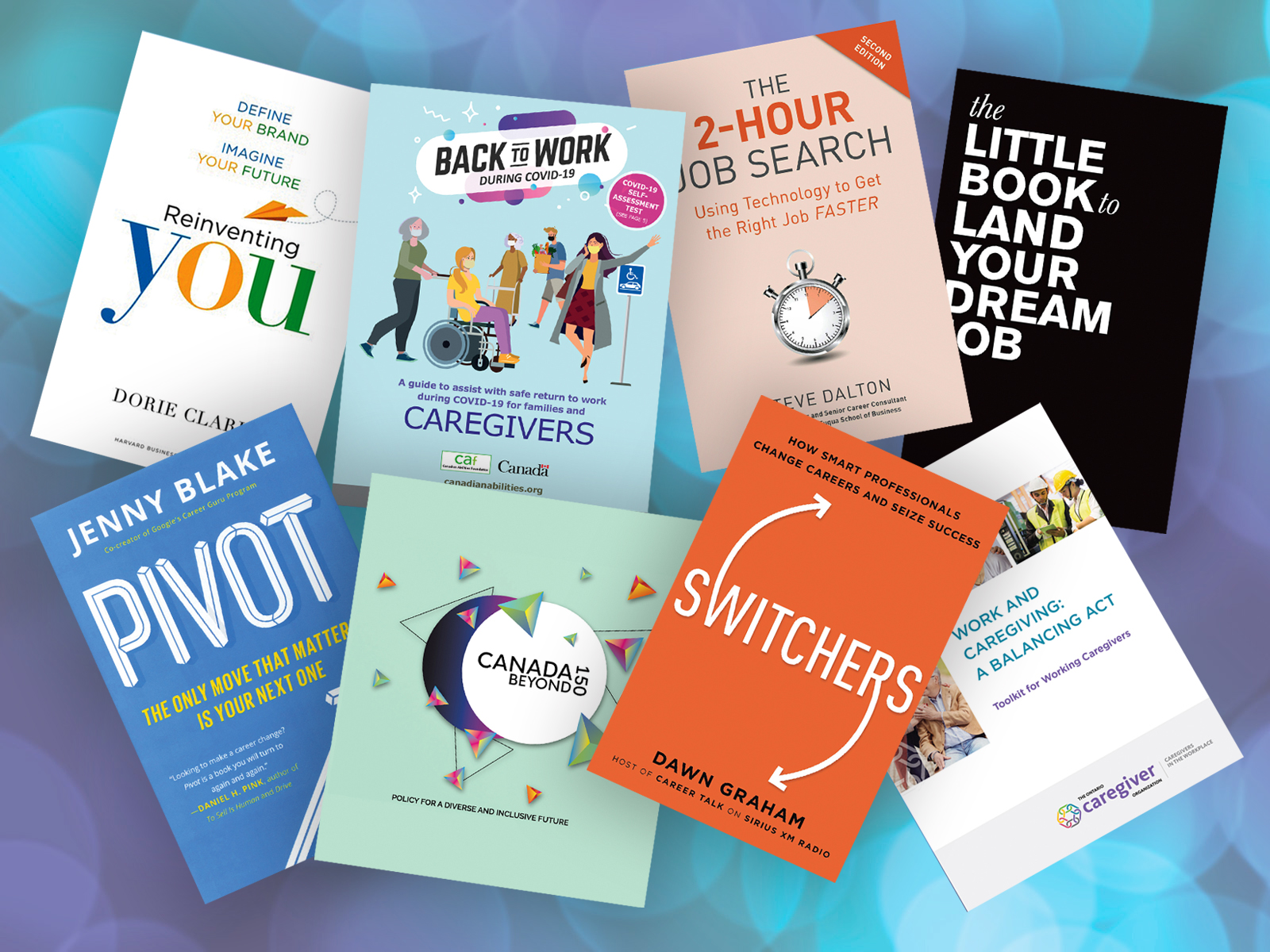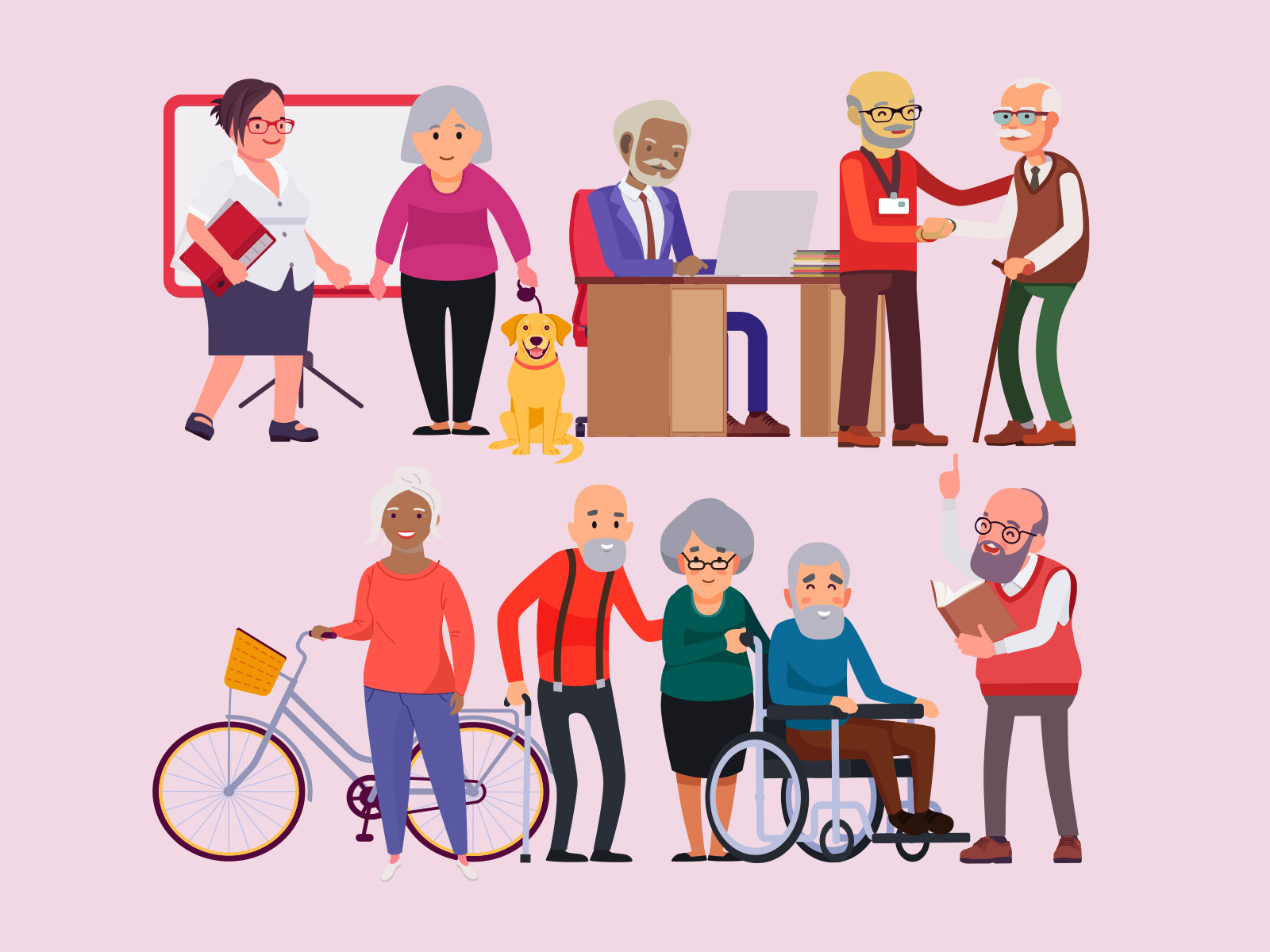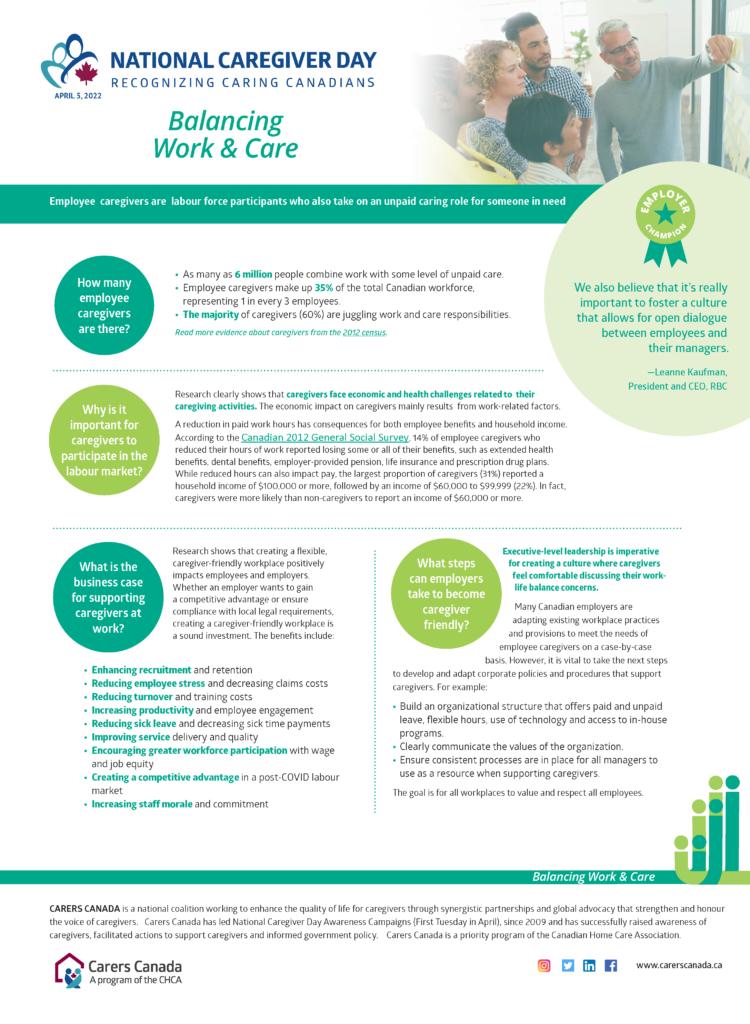
Author: Kayla
In the news
Working with a chronic disease
Personal health may be a factor for older workers in deciding when to retire, but it’s not as big a factor as previously thought, according to a new study by the Institute for Work & Health (IWH).
Despite experiencing more pain and fatigue, older workers with arthritis, diabetes or both were no different from their healthy peers based on interviews with 1,500 workers ranging from 50 to 67 years old. Across all groups, respondents planned to retire from their current job around the age of 65. Half expected to keep working part-time up to the age of 66, and one in 10 said they never wanted to stop working. Older workers’ retirement plans were sometimes influenced more by work-related factors—such as the type of work they did and the perceptions they had of their work—than by their health conditions, according to the study.
People who expected to retire at a younger age were less likely to see work as having a positive value. And those with lower career satisfaction were more likely to say they might have to retire sooner than planned. Finances feature in employee decisions around retirement, according to one expert, but they’re not the only thing.
Source: Canadian HR Reporter

Working into retirement?
Some people may need to work into their 70s for financial reasons. Regardless of why someone may want to continue working, there are different ways to go about it.
• Part-time. Transitioning or phasing in to part-time can be a great option to dip your toes into retirement. Not every employer will accommodate, but what have you got to lose by asking?
• Consultant. More flexible than being an employee. You can set your own hours and rate, and work for other companies as well. However, if your relationship is similar to employment, the CRA may not agree that you are consultant and request payroll deductions.
• New job. What did you enjoy doing when you were younger? There may be some clues you should consider for a retirement position.
Some of the happiest and healthiest retirees I have met are still quite busy in retirement, whether they are in their 50s or 80s. This is one of the most important lessons I have learned during my own career, and something I imagine
as I envision my own retirement.
Source: Financial Post

Hiring older workers
There’s a lot of talk about gender bias, racial bias, and culture bias at work, and each are important for many reasons. But perhaps one of the biggest and most problematic types of bias we face is the bias of age: we often evaluate people based on their age, and this is now becoming a major challenge in the workplace.
Around 10,000 companies were asked, “Is age a competitive advantage or disadvantage in your organization?” Over two-thirds of the companies considered older age a competitive disadvantage. This is consistent with other studies.
In other words, if you are older, you are likely to be considered less capable, less able to adapt or less willing to roll up your sleeves and do something new than your younger peers. Much has been written about this recently because the workforce is aging at a rapid rate. People age 60 and over are projected to outnumber younger workers.
The myth propagated by the retirement industry is that people over the age of 65 should retire. However, research actually shows that people who stop working often suffer from depression, heart attacks and a general malaise of not having as much life purpose.
Source: Harvard Business Review
Resources

The Little Book to Land Your Dream Job
By Billy Clark and Clayton Apgar
It is breezy, a bit fun, encouraging yet honest. Clark and Apgar outline the elements critical to analyzing your professional identity and provide hints on how to pursue your dream job.
Little Book Productions
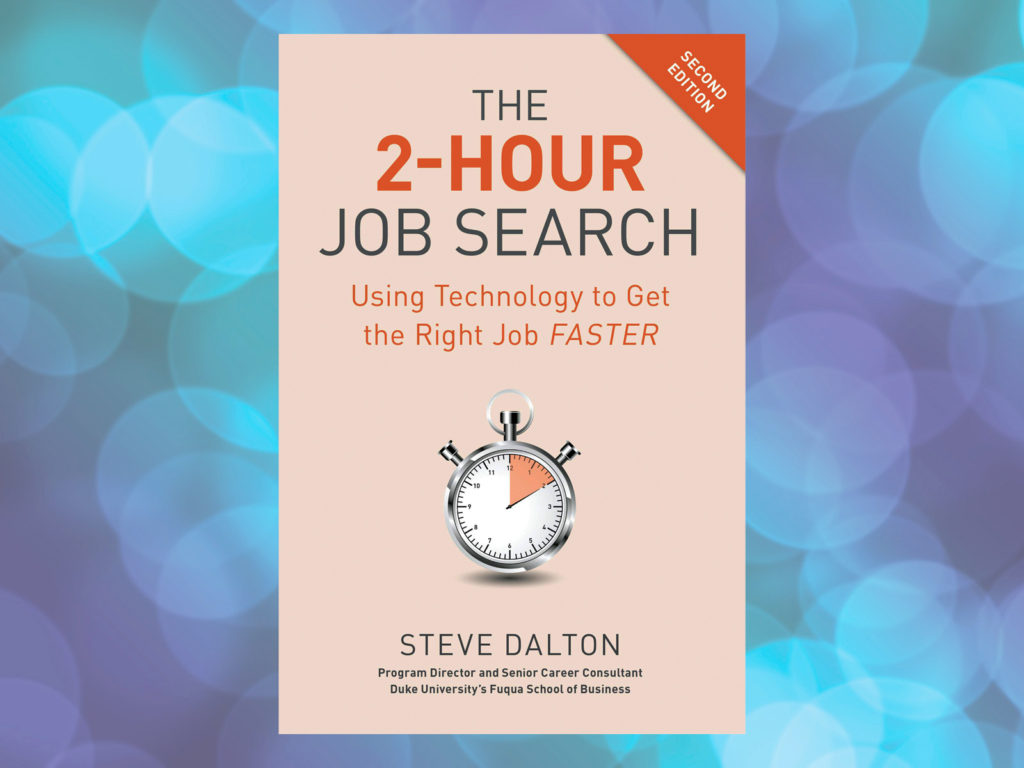
The 2-Hour Job Search
By Steve Dalton
Use the latest technology to target potential employers and secure interviews—no matter your experience, education, or network—with these revised and updated tools and recommendations. The 2-Hour Job Search rejects conventional wisdom in favour of a streamlined three-step approach where Dalton shows readers how to select, prioritize and make contact to land that critical first interview.
Ten Speed Press

Reinventing You
By Dorie Clark
Whether you want to advance faster at your present company, change jobs or make the jump to a new field entirely, the goal is clear: to build on your unique passions, strengths and talents. Consider this your step-by-step road map for the next phase of your career journey that will help you develop a compelling personal brand and ensure that others recognize the powerful contribution you can make. Mixing stories, interviews and examples from Mark Zuckerberg, Al Gore, Tim Ferriss, Seth Godin and others.
Harvard Business Review Press
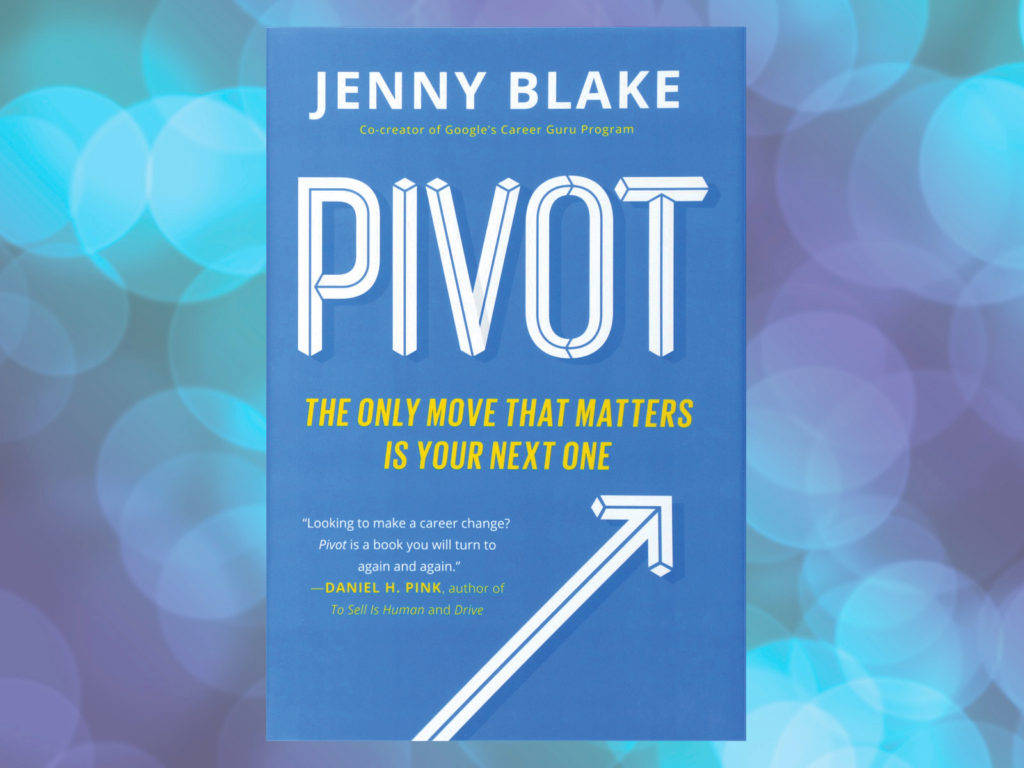
Pivot
By Jenny Blake
What’s next? When the average job tenure is only four years, roles change constantly and people plateau. But how do you evaluate options and move forward without getting stuck? This book will introduce you to the Pivot Method and show you how to take small, smart steps to move in a new direction—now.
Penguin
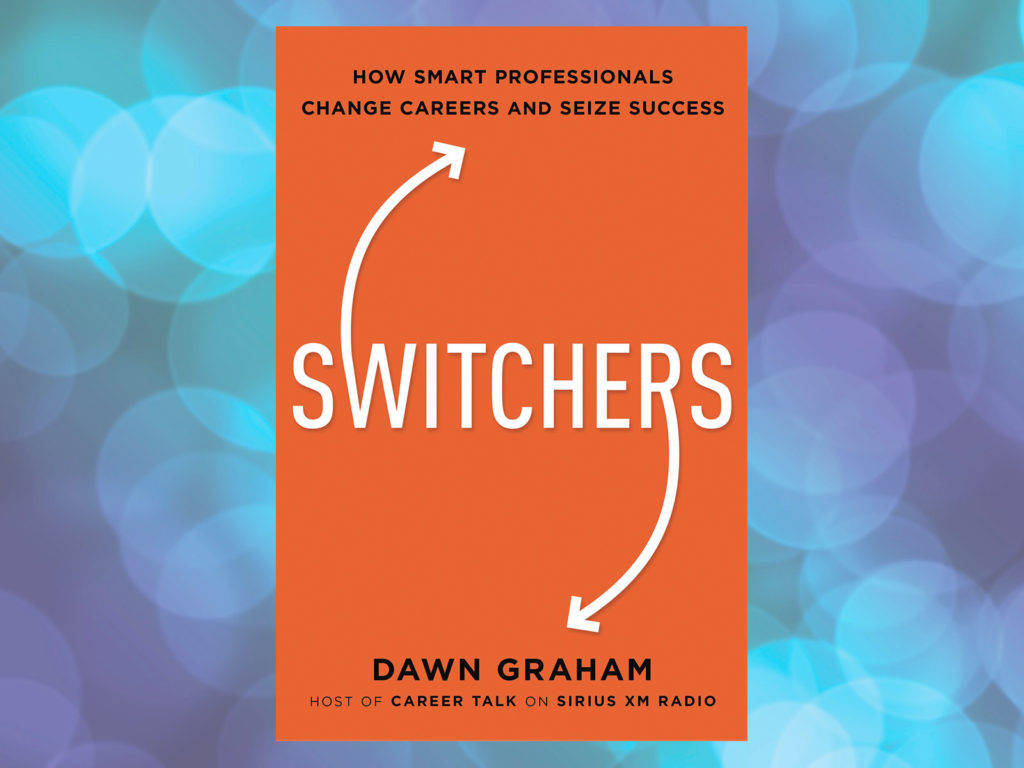
Switchers
By Dawn Graham
Stuck in an unsatisfying job? In the wrong profession? Written by celebrated career coach and psychologist Dr. Dawn Graham, Switchers provides proven strategies that go beyond the basics and tactics tailor-made to ensure your candidacy stands out.
Amacom
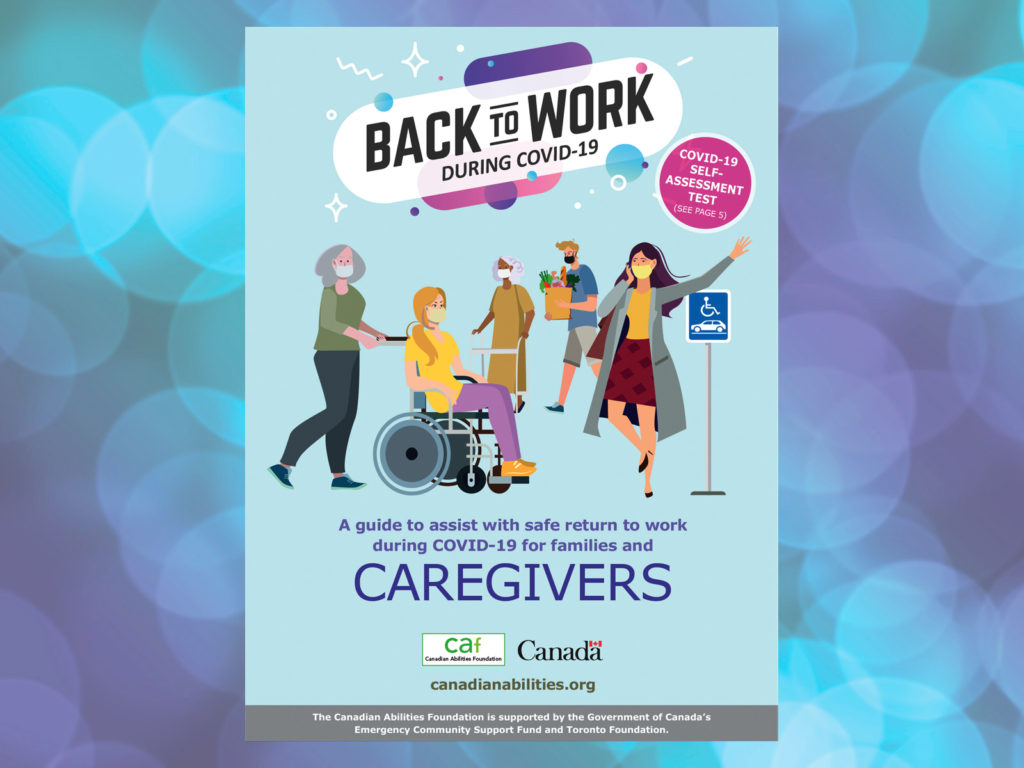
Back to Work During COVID-19
By Canadian Abilities Foundation
A guide to assist with safe return to work during COVID-19 for families and caregivers.
canadianabilities.org/back-to-work/caregivers/
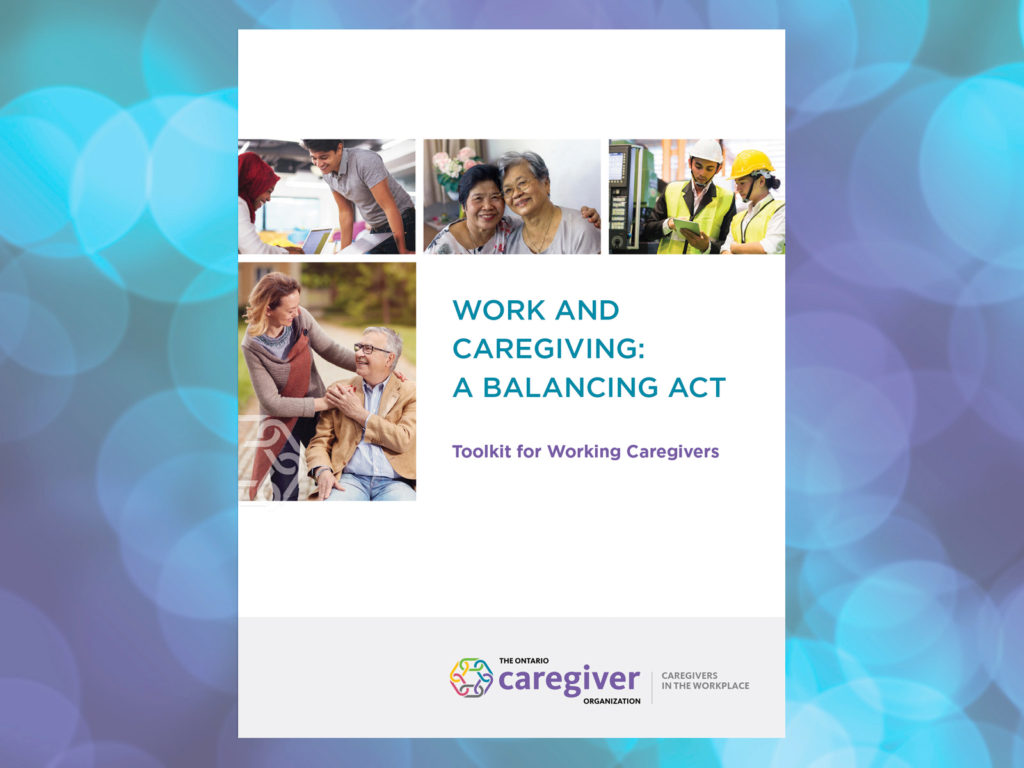
Work and Caregiving: A Balancing Act
By The Ontario Caregiver Organization
Designed to help you manage the competing needs of work and caregiving while taking care of your health and happiness. It provides practical tools and tips to help you find solutions that could work for you and your employer. You’ ll learn ideas to help you manage caregiving, options for greater flexibility and support at work and tips for talking with your employer about accommodations. It will help you understand the importance of taking care of yourself and your mental health to find better balance in juggling daily life as a caregiver.
Ontariocaregiver.ca/workplace

The Future of Work
A nine-person interdepartmental team looked at the changing nature of work. Facing a skills gap driven by automation and digital performance metrics, this insightful report sheds light on some of the changes we can expect. It’s an interesting read for those interested in the use of virtual reality and its effect on wages, types of jobs, taxes and labour laws.
Canadabeyond150.ca/reports
Pain of rejection
How to remain positive during a job search
Q) I am so frustrated. I am eager to find a job in a safe workplace and have applied to countless office clerk positions during the pandemic. Yet, I have received very few invites to job interviews. And when I finally have a job interview, I get rejected! How much more can I take of this? Any suggestions on how to move on?
A) “To succeed in your long-term goal of finding that dream opportunity and getting hired, you need to learn to cope with being turned down. Otherwise, it’s easy to let a momentary setback turn into a major career roadblock,” says Doyle on thebalancecareers.com. It’s also important to recognize that the job market is competitive right now. And sometimes, if you aren’t offered the position because the hiring manager doesn’t think you are a good fit, you are better off. Here are some of my suggestions for approaching these recurring situations:
• Talk to a friend, family member or mentor and share your feelings in a confidential setting. The best person to share this with is someone whom you trust—not your future boss or coworker. Venting can help sometimes to get over the anger and frustration but shortly thereafter, it’s important to move on. Consider mindfulness workshops and other stress-relieving activities to help you cope.
• Don’t burn your bridges. Don’t share anything negative or react emotionally at the job interview or after rejection. You never know if you might want to apply to the organization again in the future. More often than not, you will never know the truth about why you were turned down. And I’ve known cases when the same manager came back to the candidate at a later date with a job offer!!!
• Follow up the rejection with an email. This is a proactive way that might open the door with the hiring manager to consider you for other positions with the organization.
• Improve your job search skills. These turn downs happen to everyone at all levels. It’s what you do next that counts. Use this opportunity to continue to learn and get feedback on your techniques. This could include practicing your interviewing skills, revising your resume or cover letter, increasing your social media presence and professional networking as well as keeping busy with your hobbies and acquiring new skills.
• Stay involved. Consider participating in employment centres that are operating virtual employment support services for persons with disabilities during and after COVID-19.
• Ask for “constructive criticism” on your application. Although this rarely happens, sometimes an employer will offer valuable feedback on your candidacy including your resume and cover letter as well as how you did during the job interview. It doesn’t hurt to ask—but remember, this is their choice.
• Don’t give up. Keep the momentum of your job search up even if you are waiting to hear back about jobs you’ve applied for! Never stop. Continue looking until you have a serious job offer in writing that you have accepted!
Joanna Samuels, MEd, is an adult educator with an expertise in career/job coaching and community/business partnership building.
You’ve still got it
Skills, time and a giving heart
Worried or unsure about what you have to offer as a volunteer?
The good news is that most community organisations are looking for skills that you already have. And they’re the same ones businesses are looking for in employees—transferrable skills.
So, what are the key attributes that organisations are looking for in their volunteers today?
Reliability
Community organisations plan around volunteers turning up and people in our communities rely on the programs they deliver. So, being reliable is a hugely valuable quality.
Interpersonal skills
Going in to any new environment requires you to engage with new people. Volunteering often exposes you to people from all walks of life, so having great interpersonal skills that shows you can adapt to different situations and means that you are sure to do a great job.
Ability to learn and learn quickly
The first time you volunteer, you need to learn and learn quickly what is expected of you. Sound familiar? Has your boss ever asked you to do something outside of your job description? Or remember that feeling when you start in a new workplace and everyone is talking in the industry acronyms? You have to adapt and move fast.
Volunteering is no different and is a great way to not only use but also continue practicing these skills.
Problem solving
Unlike some other business scenarios where there’s a team of people trying to solve a problem, that’s not always the case in a community organisation. Your ability not only to problem solve your way through any challenges you face, but also to suggest new ways for that organisation to approach things, can extend your impact beyond the volunteer activity itself.
So, when you are looking for a volunteer opportunity, think about what you’ve learned in past situations and how you might apply it now. What are your strengths and skills you want to develop further?
Fun and friendly
While tasks assigned are often chock full of “to do’s,” volunteers are often looking to associate with likeminded individuals who are also interested in having fun and meeting new people while supporting a cause that’s near and dear to them. When you sign up to begin volunteering, you usually find approachable people who will do their best to welcome you onboard and make you feel comfortable.
Putting your best foot forward and reciprocating will be well worth your while as this is how some wonderful new friendships are formed.
Source: SEEK Volunteer. volunteer.com.au
Questions you might be asked…
Charities and not-for-profits are often keen to interview candidates. If you’re serious, it’s best to prepare for your meeting as you would for a job interview. Here are a few sample questions:
1) Why would you like to be a volunteer here? This simple question can yield valuable information about your motives and interests for seeking work with an organization. Try to link what you hope to gain from volunteering with the organization’s interests. For example, if you are looking to eventually be hired let them know. They might be interested in hiring from current volunteers.
2) Tell me what you’ve really enjoyed and a part that you wish had been different?
With this question, the recruiter is looking to learn more about the kind of volunteering you’ve done and get a sense of your commitments. Let them know if you’ve done work within the sector before or if volunteering with them will entail new experiences for you. They can then determine what kind of onboarding and training will be most useful.
3) Why do you think we’ll be a match for you?
They will already have a sense of your skills and experiences based on your resume, but this is your chance to articulate the strengths and abilities you bring to this opportunity specifically. There may also be experiences that you didn’t list on your resume, but nonetheless set you up for success as a volunteer for their organization.
4) How much time would you like to volunteer?
It’s important that the time you are able to contribute aligns with and meets the organization’s needs. Be specific. Part-time for you might mean an hour or two, but for them it could mean four to five hours.
5) Tell me about a time when you were overwhelmed by your to-do list.
The ability to adapt to changing work demands is an important quality. They may also follow up with questions like, “What would you do differently if this situation happened again?” This gives you an opportunity to show your ability to reflect and grow from your past experiences.
Keep in mind that the recruiter might have different variations of these questions that cater to their organization’s specific needs.
The joy of volunteering
A look at the charitable sector in Canada
People choose to volunteer for a variety of reasons. For some, it offers the chance to give something back to their local community. For others, it provides an opportunity to develop new skills.
During times of uncertainty and challenges, many of us feel the need to lend a hand. In fact, volunteers are needed more than ever before when times get tough.
Older Canadians make a significant contribution to our society through volunteering. However, various charities and media have reported that thousands of seniors across Canada who would normally be volunteering have stayed at home to protect their health.
If volunteering is already part of your everyday life—we applaud you! For the rest of us thinking about lending a hand to others, we’re hoping the following pages will help you to find new and interesting ways to give your talents, energy and time in person or virtually.
And know that while volunteering is ultimately about giving back to others, in the short or long-term, you’ll have the chance to develop new skills, new relationships outside of your current social circle and even new opportunities for personal growth.
Contributions that count
Most Canadians have likely engaged with a charity or non-profit at some point in their lives and many engage with them daily. Whether it’s a small community service organization, hospital, university or national charity that you’re willing to help with, it’s important to dig a little deeper and try to understand how important this sector is to both our well-being and our country’s economy.
First off, before you start giving back be sure you know a little bit about the organization and its structure. There is, for instance, a difference between a charity and a non-profit. All charities are run as non-profits but not all non-profits are charities.
Organizations wishing to be recognized as registered charities must apply to Canada Revenue Agency (CRA), which will look at their purposes, determine if they meet the requirements to be granted a charitable registration and monitor them on an ongoing basis.
It’s the law
According to CRA, all charities are officially required to:
• Engage only in allowable activities. A registered charity is allowed to carry out its charitable purposes both inside and outside Canada in only two ways: by carrying on its own charitable activities and by gifting to qualified donees. A registered charity must maintain direction and control over its activities (whether carried out by the charity or by an agent or contractor on its behalf) and must not engage in activities that directly or indirectly support or oppose a political party or candidate for public office or unrelated business activities.
• Keep adequate books and records. A registered charity must keep adequate books and records for the prescribed time period at an address in Canada that is on file with the Canada Revenue Agency.
• Issue complete and accurate donation receipts. A registered charity may only issue official receipts for donations that legally qualify as gifts. An official receipt must contain all the information specified in Section 3501 of the Income Tax Regulation.
• Meet annual spending requirements (disbursement quota). A registered charity must spend the minimum amount calculated for its disbursement quota each year on its own charitable activities, or on gifts to qualified donees (for example, other registered charities).
• File an annual T3010 information return. A registered charity must file an annual T3010 information return (together with financial statements and required attachments) no later than six months after the end of the charity’s fiscal period.
• Maintain the charity’s status as a legal entity. A registered charity that is constituted federally, provincially or territorially must meet other specific requirements (in addition to the requirements of CRA) in order to maintain its status as a legal entity. This may include annual filing and/or annual fees. A registered charity should check with the relevant authorities to verify these additional requirements.
• Inform the Charities Directorate of any changes to the charity’s mode of operation or legal structure. A registered charity should get confirmation from the Charities Directorate (the Directorate) before changing its stated objectives and/or activities to make sure they qualify as charitable. A registered charity should inform the Directorate if it changes its name, telephone number, address, contact person or governing documents (constitution, letters patent, etc.) and must obtain prior approval from the Directorate before changing its fiscal year-end.
As part of its ongoing efforts to make sure charities meet the requirements of registration, the CRA uses a variety of compliance activities. Historically, the CRA has audited approximately 800 to 900 charities per year, representing about 1 per cent of registered charities.
Many of the same guidelines apply for those running not-for-profits as well. However, the main difference is that a registered charity can issue official receipts for donations for income tax deduction purposes. Non-profits do not register with the CRA, so they are not able to issue official donation receipts for income tax purposes. Therefore, as a donor, you cannot receive any tax credits.
An integral part of our economy
The charitable and non-profit sector’s contribution is significant when looked at as a whole—greater than the GDP of the retail trade industry and close to the value of the mining, oil and gas extraction industry. The “core non-profit sector” is the common way to refer to charitable and non-profit organizations that are not hospitals and universities. Their revenues account for about 2.4 per cent of Canada’s GDP. That’s more than three times that of the motor vehicle industry.
Many members of the public believe that charities and non-profits are funded by the government for the most part which is not the case. Each of them has various sources of income including: earned income from the sale of products and services (a whopping 45.1 per cent of the sector’s income), individual, family or corporate donations as well as grants from private foundations and the government.
Some organizations receive no funding from any government department. Hospitals, universities, and colleges are the exception to this rule. Almost 75 per cent of their funding comes from governmental sources with 72 per cent of that being from a provincial government. In number, these institutions only represent 1 per cent of the total number of organizations, but they represent around 66 per cent of the total revenues of the entire sector.
Funding sources for charities and non-profits
The Satellite Account of Non-profit Institutions and Volunteering published by Statistics Canada showed a breakdown of the core non-profit sector funding:
• sales of goods and services account for 45.6 per cent of total income
• government funding at 20.9 per cent
• membership fees 17.1 per cent
• donations from households 11.2 per cent
• investment income 3.6 per cent
Simply essential
Charities play a very valuable role in communities from coast to coast, providing expertise and support to every aspect of our daily lives in healthcare, education, alleviation of poverty, combatting food insecurity and fighting climate change, to mention a few.
Just as importantly, charities contribute to Canada’s public policy process. Some of the finest outcomes have been achieved when charities and governments work together, such as in the drunk driving legislation and smoke-free workplaces initiatives.
Where to volunteer
There are a number of ways to find the best place to give volunteer hours and some great resources. A few of our favourites include Volunteer Canada, Charity Village, United Way and Canadian Red Cross. For a full listing see page 12. CanadaHelps is a donation and fundraising portal that provides a listing of all charities in Canada, presents their mission and program information and offers an easy way for Canadians to make donations to their favourite charity.
Did you know?
Imagine Canada’s Research Notes shows that almost half of the population aged 15 and over (12.5 million people) volunteer and engage with charities on a regular basis, contributing 2.1 billion volunteer hours which translates into 1.1 million full-time jobs.
The Scoop
We’re here to help:
• 3/4 of Canadians informally volunteer
• 3.4 billion hours are given annually
• 12 per cent of volunteers account for 78 per cent of the tracked hours
• 25 per cent of volunteers give up to 132 hours each annually.

What makes for a great volunteer?
Unsure about what you have to offer? Most organizations are looking for some of the skills you already have that can be transferred from other parts of your life. Here are the top three:
1) Reliability: you show up as promised.
2) Interpersonal skills: you connect, motivate and encourage others on the team.
3) Ability to learn quickly: you’re flexible and adapt as you build up your expertise.

All in the family
Getting behind a cause together has been a popular way for immediate and extended families to socialize while giving back. Family volunteering provides an opportunity to feel warm and fuzzy as a team, and it also puts a significant and strong push behind an event or cause the family feels passionate about.

Making a difference!
Annually, about 17 billion hours are contributed by almost 13 million Canadians on a formal basis to charities, not-for-profits and community organizations.

Forget the banquets
Most people prefer to work directly with the people who benefit from their help and say that they don’t want banquets, recognition awards or fancy certificates. Instead, they’d like to be thanked and recognized in private and personal ways.

Informal vs formal
Directly helping people outside the household or improving the community without an organization behind your efforts is considered “informal” volunteering. On the other hand, when activities are done without pay on behalf of a group or organization that is leading the effort, volunteering is considered “formal.”

What kind of volunteer are you?
Groupie: You thrive on the camaraderie of a group and like to have fun while you’re getting results.
Juggler: You’re a dynamo who enjoys giving your time to a variety of organizations.
Cameo: You have an unpredictable lifestyle so you can’t do regular or routine tasks but you’ll make an appearance when it counts.
Rookie: You’re cautious but you’ve started to think it’s time to make a difference and start giving back.Roving: You have a specific skill set that you’d like to offer to more than one organization.
Type A: You’re a multi-tasking leader who says “yes”often and means it.

High retention
Skills-based matching is the key to recruiting and keeping baby boomers with professional or management experience committed to the cause.

Making a difference in minutes
“Micro-volunteering” generally refers to easy, no-commitment, cost-free actions that take less than 30 minutes to complete. There is usually little or no formal agreement needed before a volunteer can get started, and no expectation that the volunteer will return. Micro-volunteering is a way to involve those who can’t afford or aren’t able to commit to something longer term.

Employer-supported volunteering (ESV)
ESV has opened up opportunities for employees to volunteer, with support or encouragement from their employers. The levels of support may differ from workplace to workplace, and employers can provide support by allowing time off for volunteering or providing in-kind support to community causes. Building pre-retirement awareness around volunteering and incorporating volunteerism into retirement planning seminars can help introduce the concept of volunteering as a fulfilling future opportunity.

Did you know?
Fundraising is the #1 activity that volunteers were engaged in, with almost half saying they helped raise money for their cause.
You’re invited…To reimagine your future
Much has been said about the impact of COVID-19 on older adults. Many have struggled with loneliness due to isolation from family, friends and colleagues, as well as financial challenges due to lost or reduced employment, not to mention changes in personal health and well-being. Things can be tough, especially if your circumstances have changed or if you’re new to Canada.
A fresh start
If your senior years aren’t turning out quite as you envisioned, perhaps it’s time to take a fresh look at your skills, experience and interests and “parlay” them into a world of surprising new opportunities. Perhaps it’s even time to think about giving back and learning about the many ways you can contribute to your community.
To support you in this venture, The Canadian Abilities Foundation is pleased to introduce Parlay, a new education program designed to encourage, assist and connect you in your search for new horizons.
A complimentary program
Our specialized digital magazines, in concert with our existing publications and programs, will provide you with curated content, advice and plenty of ideas to help you try new things, experiment and come up with a refreshing new vision and action plan. And our video interviews will share highlights and wise counsel from energetic experts and older adults with real world experience in volunteering and a variety of other topics.
With appreciation
A special thanks to all of our authors and interviewees for their personal contributions and to our Patron’s Council Chair, Joel Dembe, for working on the video collection with us.
Caroline Tapp-McDougall
Editor in Chief
What you need to know if you plan to keep working into retirement
Some people may work into their 70s because they want to or because they are not prepared financially for retirement. These days, more than ever, there are roles for seniors to work well past the normal retirement age.
The concept of retirement is a relatively new one that is credited to German Chancellor Otto von Bismarck. In 1889, at a time when youth unemployment was high, he decided that “those who are disabled from work by age and invalidity have a well-grounded claim to care from the state.” He introduced an old-age pension program that paid German seniors to leave the workforce.
The life expectancy in Germany at the time was only 70 years of age, so German retirement tended to be short-lived. According to Statistics Canada, the average Canadian today retires at age 64.3. Public sector employees retire at age 62.6 on average and self-employed workers retire 4.5 years later at age 67.1. There is a 50 per cent probability that a 65-year-old woman will live until age 91, and that 65-year-old-men will live to age 89. Typical Canadian retirees should therefore plan for a retirement of more than 30 years, much longer than their late-19th-century German counterparts.
Regardless of why someone may want to continue working after retirement, there are different ways to do it, and financial and lifestyle implications to consider.
Transition to part-time
I have worked with thousands of clients to plan their retirement and often share the same advice about how to ease into it. If you can do a phased retirement, by transitioning to part-time, it can be a great option to dip your toes slowly into the retirement pool.
Not every employer will allow an employee to work part-time, but if you are able to retire and are prepared financially, what have you got to lose by asking? Inquiring is not just cause for termination. So, in the unlikely event that you are subsequently fired, you would have statutory and common-law entitlements to compensation. If you are almost financially independent and able to retire anyway, you may come out ahead financially.
Consulting work
In the early stages of retirement, some semi-retired professionals will engage in consulting work. This, too, is an option to pitch to your current employer that is like working part-time but has other benefits.
A consultant has more flexibility than an employee, setting their own hours and rate, and can work for other companies as well. Retired employees must be careful about becoming self-employed but continuing to act like employees. If the relationship between an employer and former employee is too similar to employment, the Canada Revenue Agency may consider the individual to still be employed. This can cause the employee to have some self- employed tax deductions denied or the employer to be responsible for certain payroll taxes.
Most consultants operate as sole proprietors reporting their income and expenses on their personal tax return. If they do not use a business name that differs from their legal name, they will not need to register their name with the provincial government. Depending on the type of services provided, income level, and location, a business may have an obligation for federal Goods and Services Tax (GST), provincial Harmonized Sales Tax (HST) or Provincial Sales Tax (PST).
Your own firm
Some consultants opt to incorporate companies. There are up-front legal fees and ongoing legal and accounting fees for a corporation, and it may not be worth it, especially for modest amounts of income. This is similar to phased retirement but has other benefits. Income splitting is also a benefit of incorporation for someone aged 65 or older who may be able to pay dividends to a lower-income spouse who owns shares of the corporation, thereby minimizing family tax.
New job
It may be easiest to work part-time for your current company or transition to consulting in the same industry but sometimes a new job is a better option. What did you enjoy doing when you were younger, maybe even as a child? There may be some clues here as to what you should consider in retirement.
I am surprised how few people in big cities like Vancouver, Toronto or Montreal consider early retirement by downsizing their valuable homes and moving to a lower-cost Canadian city or another country. Many couples or single people with no children or those who had children at a young age could semi-retire several years earlier and continue to work in a job and in a place that may bring them more satisfaction.
Places like Portugal, Panama and Costa Rica—the top three rated countries in International Living’s 2020 Annual Global Retirement Index—may be within reach for early retirees for $2,500 to $4,000 per month including rent. By selling or renting out their homes, early retiree could move abroad temporarily or permanently and supplement
their savings or rental income with part-time or remote work. The pandemic may accelerate this opportunity for many people whose roles may become permanent work-from-home positions.
Consider giving back
Volunteering is a great way to continue to work in retirement. You can be compensated in different ways for work, and volunteer work can sometimes be more rewarding than any paid position.
Someone who wants to create a job or consulting opportunity for themselves could consider volunteering or working for a discounted wage with an individual or business who they would like to help. This might include a young person or company in their field who might not otherwise be able to pay their market rate. The point is there are reasons to work beyond making money, especially if you are financially independent and do not need it.
Seniors with children or grandchildren may find great joy helping them with tasks, errands or child care. There are things a retired parent can do to help their kids that money cannot buy.
Some of the happiest and healthiest retirees I have met are still quite busy in retirement, whether they are in their 50s or 80s. This is one of the most important lessons I have learned during my own career, and something I imagine as I envision my own retirement.
Believe me, there are days I long for the freedom to golf all day or lie on a beach sipping cocktails, neither of which are things I do enough of at this busy point in my personal and professional life. But the thought of growing bored of golf or the beach or other things that you work hard all your life to enjoy is something that leads me to believe I will continue to work after I retire, even if it is more for pleasure than for money.
Jason Heath is a fee-only, advice-only Certified Financial Planner (CFP) at Objective Financial Partners Inc. in Ontario.
Great expectations:
On the job at 55+
Whether it’s topping up pension income, pursuing a life-long interest or to paying daily bills, many Canadians continue to want to stay on the payroll.
Full-time, part-time or on a flexible basis, one in four of us is staying on the job after age 55. You can find us in small and large businesses, every level of government, in the non-profit sector, or as consultants, entrepreneurs and artists.
As this trend of staying on past retirement age continues, expect change in the way companies hire and run their workplaces. There will be exciting new opportunities and, perhaps, the chance to learn different skills along the way.
It’s simply untrue that hiring or re-hiring older workers is not good for business. Known for their loyalty, reliability, experience, they have less turnover, fewer accidents and lower absenteeism rates than their younger counterparts.
And worry not, an older adult’s potentially slower performance at work will usually be balanced out by their quality of work and accurate decision-making in high-stress situations.
A well run, well-designed, accessible workplace is better for everyone, but know that there are some things to consider that will make a healthy difference for older workers. Beyond repetitive strain injuries, which arise over time, the Canadian Centre for Occupational Health and Safety shares this workplace guidance:
• Reach and flexibility tend to decline with age, as does functional breathing capacity (up to 40 per cent between 30–65 yrs). This could affect jobs requiring extended physical labour or work in hot or cold conditions.
• Posture and balance could be hard to maintain for muscular effort, precise adjustments, work done on angles or slippery/unstable surfaces.
• Recovery time could be impacted by lack of sleep for aging shift or night workers.
• Safety and productivity could be affected by noise, as well as hearing loss and vision changes.
• Cognitive changes, such as short-term memory loss, could mean that certain tasks and activities could take longer.
Older workers use their expertise and experience to overcome some of the challenges related to aging and make some of the best employees you’ll find.



